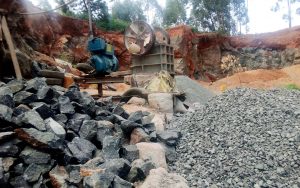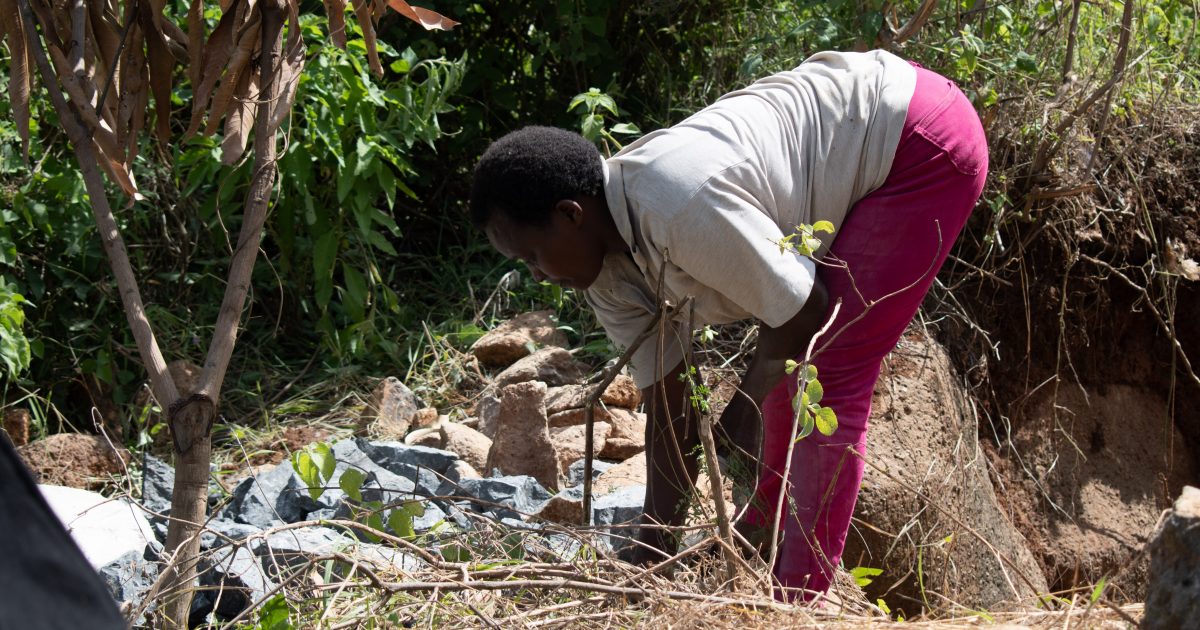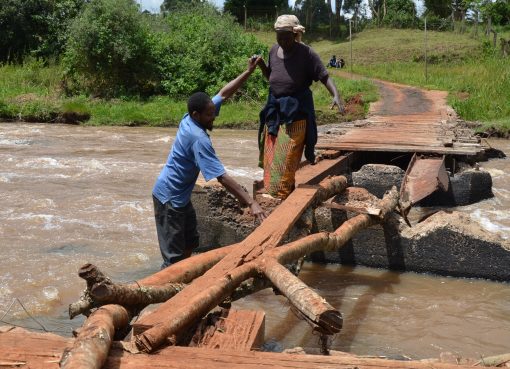Ballast-making in Tharaka Nithi dates back to the early 1990s when road construction added to the demand for permanent structures and real estate grew.
Ballast is obtained from crushing the igneous granite rocks that were a result of volcanic activities and in Tharaka Nithi, the rocks are available in different areas and mostly near river banks.
In the Mucwa area, where the business thrives, you are welcomed by people sitting under shades crushing stones. Tungu stream which flows through Mucwa area near Chuka University is blessed with large deposits of igneous granite rocks. Residents who live near rivers took advantage of the rising demand for ballast, popularly known as ‘kokoto’, and turned it into a new way of making money.

When the rocks are big and can’t be crushed easily, explosives are deployed to break the rocks into smaller pieces that can be crushed using the ballast crusher or by hand using the stone crushing hammer.
“A hole, about 6 inches deep is drilled into the rock and an explosive substance together with paraffin is poured into the rock. A rope referred to as ‘condex’ is dipped into the hole and sealed with soil leaving a small part of the rope outside,” explains Muchiri M’Baini, a ballast dealer in the area adding that once a match is used to light the exposed rope, it leads fire into the hole making the rock to explode into smaller pieces.
The people doing the job usually shout so as to notify people in the area to be careful as the explosion is loud and the stone particles may hit unaware individuals within a certain radius.
M’Baini disclosed that there are people who have the ballast crushing machines and they pay residents to break the rocks into bits that can be crushed by the machine. The machine does the work of crushing the stones to ballast and then it is ready for sale.
In the past, kokoto crushing was an exclusively male-dominated business. The thought that women could do the hard manual labour was almost unthinkable. However, as the years went by and economic circumstances drove off stereotypes about gender-specific jobs, women went into the kokoto business too.
“When you need money to feed your family, you don’t have the time to choose between jobs. What matters is to bring food to the table,” says Ms. Rosemary Kagendo.
Nowadays, the number of women in kokoto equals that of men. There is gender balance with most casual labourers doing it as their main source of income.
Ms. Kagendo explained to KNA that those without the machines crush the rocks manually and sell the ballast in 20kg container measures. Kagendo who works in the site explained to us that she sells the 20kg containers at Sh15 and per week, one could crush around 60 such containers.
“Sometimes many people do the job out of desperation. Currently, the farm works are over and I am in need of cash to sustain my family. This is the only side hustle available during this season,” said Ms. Kagendo.
But the hustle has its share of challenges. After digging deep into the ground to get the rocks, deep pits with high cliffs are left behind. These pose risks to the resident during the rainy season.
The ballast dealer further revealed that the craters left behind fill up with water during rainy seasons becoming mosquito breeding grounds and hence a health hazard.
There is no plan to restore the ballast mine site to any other beneficial use. Such a plan needs to be developed and approved by regulatory agencies, and funding be set aside to complete the restoration work.
By Kelvin Miriti and Christine Njura





